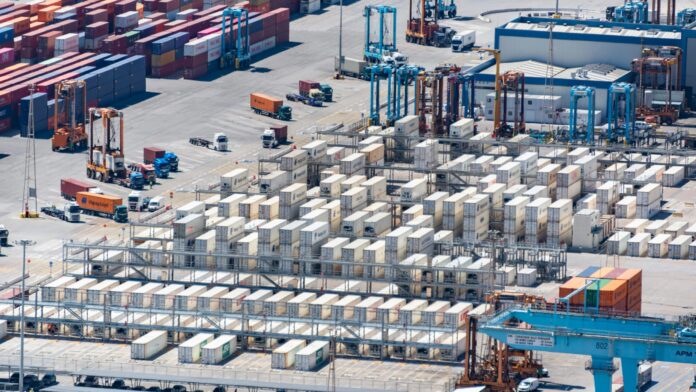Sri Lanka’s export economy is once again walking a tightrope as rising global protectionism redefines the rules of international trade. At the heart of this emerging challenge is the United States, whose evolving tariff regime has created a cloud of uncertainty over several billion dollars’ worth of Sri Lankan exports. Apparel, rubber-based goods, and a host of industrial components are directly affected, raising alarms across boardrooms and factory floors alike. This tension comes at a time when the country is attempting to stabilize after its worst economic crisis in living memory. The stakes could not be higher.
The recent reduction of a previously imposed 44 percent tariff on Sri Lankan goods to 30 percent and now to 20 percent has provided temporary relief. However, these shifting percentages are less a sign of resolution and more a reminder of vulnerability. Trade analysts and policy advisers argue that such volatility discourages long-term planning and forces exporters into a survival mode that undermines quality, innovation, and brand confidence. Sri Lanka’s leading apparel manufacturers, some of whom supply premium global retailers, are being forced to absorb costs, renegotiate supply chains, and explore new markets all at once.
The deeper concern lies in the structural dependence on a narrow band of products and trading partners. Nearly half of the country’s foreign exchange earnings are tied to a few large markets and commodity groups. While diversification has long been a stated policy goal, progress has been slow. Most small and medium-scale exporters lack the capacity to meet complex regulatory standards in alternate markets such as the EU or East Asia. Without fast-tracking trade facilitation agreements and support for capacity-building, Sri Lanka risks losing competitiveness in a rapidly realigning global economy.
This crisis also exposes the limits of diplomatic engagement. While the government has held high-level talks with the US Trade Representative and other international agencies, the pace of negotiation is no match for the immediacy of factory closures and job losses. The apparel sector alone employs over 300,000 people, a large portion of whom are rural women. The social cost of continued uncertainty is high and likely to cascade into other sectors, including transportation, warehousing, and retail.
If the current tariff threats turn into sustained barriers, Sri Lanka may be forced to rethink its entire export model. Some business leaders are calling for the development of high-tech manufacturing zones, services outsourcing hubs, and even nearshoring partnerships with South Asia and Africa. However, these solutions require long-term investment, robust infrastructure, and policy continuity. For now, what is most urgently needed is a national trade resilience strategy that includes market diversification, export insurance, and legal defense funds for trade disputes.
The volatility of global markets is no longer an abstract risk. For Sri Lanka, it is now a lived reality affecting livelihoods, foreign exchange stability, and industrial confidence. While reforms at home are essential, trade diplomacy must rise to match the scale of the threat abroad. The world’s supply chains are shifting. Sri Lanka must decide whether it will be pushed to the margins or repositioned at the center of a new, smarter trade map.




